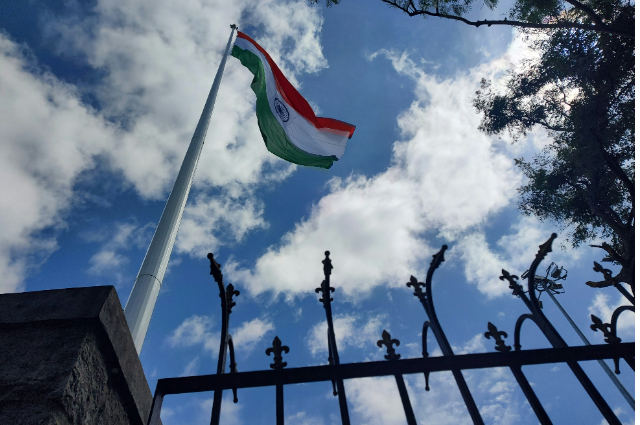
ARTICLE 370: ITS HISTORICAL CONTEXT AND LASTING IMPACT ON JAMMU AND KASHMIR
Article 370 has been central to Jammu and Kashmir's political identity since its inception. Following India’s independence in 1947, the princely states had the option to join either India or Pakistan, or remain independent. Maharaja Hari Singh, then ruler of Jammu and Kashmir, initially sought autonomy but ultimately decided to accede to India under complex conditions. This led to the formation of the Instrument of Accession, signed in October 1947, which granted India authority over the state’s defense, foreign affairs, and communications. This agreement became the precursor for Article 370, formalizing Jammu and Kashmir’s autonomy within the Indian Constitution.
In 1949, under the guidance of Sheikh Abdullah, the Prime Minister of Jammu and Kashmir, and in consultation with the Indian government led by Prime Minister Jawaharlal Nehru, Article 370 was crafted. Its unique provisions were intended as a temporary arrangement to maintain the region’s distinct identity, respecting its majority-Muslim population and its political legacy. The special status provided under Article 370 allowed Jammu and Kashmir its own constitution, flag, and considerable autonomy in legislative matters, excluding finance, foreign affairs, defense, and communications, which were under Indian central jurisdiction.
Autonomy and Its Implications:
Under Article 370, Jammu and Kashmir enjoyed a degree of autonomy unparalleled by any other Indian state. Most Indian laws did not automatically apply to the state; instead, they required approval from the state’s legislature. This led to distinctive legislative decisions and policies, such as specific land ownership rights under Article 35A, which restricted land ownership to permanent residents, effectively safeguarding the region’s demographic profile. Such special provisions fostered a sense of unique identity among Kashmiris but also created a sense of detachment from the rest of India, with critics arguing it impeded integration.
Over time, the special status of Jammu and Kashmir became both a point of pride and controversy. Many political leaders in the region defended Article 370 as essential to preserving Kashmiri culture and autonomy, while critics argued it fostered separatism and hindered the state’s economic progress. This divisiveness turned Article 370 into a potent symbol of autonomy and dissent, especially in the eyes of separatist groups who saw it as a validation of their claim to Kashmir’s distinct political status.
Abrogation and Its Political Significance
On August 5, 2019, the Indian government, led by Prime Minister Narendra Modi and the Bharatiya Janata Party (BJP), issued a presidential order effectively abrogating Article 370. The decision was met with widespread debate and sparked tensions within Jammu and Kashmir. With the abrogation, Jammu and Kashmir lost its statehood and was reconstituted as two Union Territories: Jammu and Kashmir, and Ladakh. This move was aimed at bringing uniform laws, economic reforms, and development initiatives to the region, addressing the BJP’s long-standing agenda of integrating Kashmir fully with India.
The significance of this decision on Indian politics cannot be overstated. For the BJP, abrogating Article 370 was seen as fulfilling a core promise and aligning with their vision of “One Nation, One Constitution.” It marked a watershed moment in Indian politics, transforming the BJP's stance on Kashmir into national policy and reshaping public opinion on the region’s role within India.
Impact on Regional Identity and National Integration
The removal of Article 370 has stirred mixed emotions among the people of Jammu and Kashmir. For many, the loss of autonomy has led to concerns over cultural preservation, fears of demographic shifts, and anxiety about the erosion of their historical identity. For the Indian government, however, this step was viewed as a necessary measure to promote national unity and ensure equal opportunities for residents across all Indian states. The government argued that by lifting restrictions on property rights and other economic laws, it could encourage investment and development, thereby improving the region’s economy and standard of living.
- Since the abrogation, changes in governance have been visible, but the larger question remains: can the region balance its unique identity while fully integrating with the Indian nation-state? This delicate balance will likely define the region’s future for years to come.
SUMMARY OF THE SUPREME COURT RULING
In its recent ruling, the Supreme Court of India upheld the central government’s decision to abrogate Article 370, which granted Jammu and Kashmir special status. This decision, coming several years after the abrogation was implemented in August 2019, has sparked significant discussion about its implications on Indian federalism, constitutional values, and regional autonomy.

Summary of the Supreme Court Ruling
1. Legal Basis for Upholding Abrogation:
The Supreme Court ruled that the abrogation process was constitutionally valid, as Article 370 itself allowed for modifications to its provisions through a Presidential Order. This interpretation centered on the conditional clause in Article 370(3), which empowered the President to declare the article inoperative, provided that the Constituent Assembly of Jammu and Kashmir provided consent.
However, in the absence of a Constituent Assembly, the court accepted the consent of the state’s Legislative Assembly, which was later replaced by Parliament’s endorsement.
2. Procedural Legitimacy:
The ruling emphasized that the procedural steps taken by the government were in line with the constitutional mandate. By converting Jammu and Kashmir from a state into two separate Union Territories, the government argued that the region would benefit from a more streamlined governance structure, a claim the court largely accepted.
3. Sovereignty and Legislative Authority:
The Supreme Court reaffirmed the sovereignty of Parliament in matters related to Jammu and Kashmir, aligning with the government’s stance that the state’s integration required adjustments that served the broader national interest. This underscores a view of the union as a cohesive entity where regional flexibility exists within the bounds of central oversight.
Key Arguments For and Against the Decision
1. Arguments For the Abrogation
- National Integration: Proponents argue that abrogation was necessary to fully integrate Jammu and Kashmir into the Indian Union. They believe that Article 370 created a constitutional barrier that prevented the region from experiencing the same level of development and legal uniformity as other states.
- Security Concerns: Many supporters contend that Article 370’s special status fostered an environment where separatism and terrorism could thrive. By removing the article, they argue, the central government gained greater control over security and administrative issues.
- Developmental Gains: The government argued that abrogating Article 370 would lead to improved investment, economic opportunities, and social welfare programs in the region, aligning Jammu and Kashmir’s development trajectory with the rest of India.
2. Arguments Against the Abrogation
- Erosion of Federal Autonomy: Opponents argue that the abrogation undermines the principles of federalism by unilaterally altering the status of a region that joined India under specific terms and conditions. This action, critics say, could set a precedent for the central government to alter the status of other states or territories.
- Lack of Democratic Process: Some view the decision as bypassing the democratic will of the people in Jammu and Kashmir, where political participation was limited due to the imposition of central rule. Critics assert that the absence of local legislative consent weakens the legitimacy of the decision.
- Human Rights and Civil Liberties: There are concerns about human rights in Jammu and Kashmir post-abrogation. Activists and some political leaders argue that increased central control has led to restrictions on freedoms, communication blackouts, and detentions of political figures, raising questions about democratic accountability.
Implications for Indian Federalism
- Federal-Centric Approach: This decision highlights a federal model that tilts toward centralized control, especially in security-sensitive areas. It underscores the central government’s authority over regional matters where national security is deemed a priority.
- Precedent for Special Provisions: The ruling raises questions about the stability of special provisions given to other states or regions. States with distinct cultural, social, or political identities may feel vulnerable to similar interventions, impacting the federal structure.
- Judicial Endorsement of Constitutional Flexibility: The decision reinforces the judiciary’s stance that constitutional provisions are flexible and adaptable, especially when national integration or security is in question. This flexibility, while ensuring unity, also tests the limits of regional autonomy in India’s diverse federal setup.
IMPACT ON KASHMIR’S AUTONOMY AND GOVERNANCE
The abrogation of Article 370 has profoundly reshaped the governance and autonomy of Jammu and Kashmir, sparking significant shifts in its political landscape. The Supreme Court’s decision to uphold this move has triggered far-reaching changes in both administrative functions and local governance structures.
1. End of Special Autonomy
Article 370 had granted Jammu and Kashmir a special status, allowing it to have its own constitution and a separate set of laws, notably in areas such as property rights, employment, and residency. Its abrogation has removed the autonomy the region once held, subjecting it to the same laws as the rest of India. This change has led to the dilution of the region's special identity, leading to a sense of loss for many locals.
2. Changes in Governance and Administrative Control
- Post-abrogation, the central government has assumed greater control over Jammu and Kashmir’s governance. The region has been bifurcated into two Union Territories—Jammu and Kashmir, and Ladakh—both of which now operate directly under the central administration without the need for an elected state legislature.
- The Governor’s rule, which had already been in place since the revocation, now continues, bypassing the role of locally elected leaders. The Lieutenant Governor appointed by the President of India holds substantial administrative powers over the region's functioning, eroding the traditional power dynamics where local leaders once played a central role in governance.
3. Impact on Legislative Powers
- Prior to the abrogation, the Jammu and Kashmir state legislature had significant powers, including the ability to pass laws on a variety of matters, including land rights and the preservation of the region's unique demographic character.
- Following the revocation, these legislative powers have been significantly curtailed. The Jammu and Kashmir Legislative Assembly no longer holds the same authority, and much of the region’s legislative actions are now subject to approval from the Indian Parliament. This shift has reduced the scope of local legislative autonomy and has caused concerns about the marginalization of the region’s specific needs.
4. Changes to Local Political Leadership
The abrogation of Article 370 has had an immediate impact on Jammu and Kashmir’s political leadership. The region's former leaders—such as those from the National Conference (NC), People’s Democratic Party (PDP), and Jammu and Kashmir Peoples Conference (JKPC)—have been sidelined. The absence of an active and empowered local government has created a political vacuum that has, to some extent, been filled by the central government.
Local political parties, once dominant in shaping the region's policies, now find their relevance diminished. Many former leaders have been detained or placed under house arrest during and after the revocation. The political exclusion has led to widespread unrest among local populations, who feel disenfranchised.
5. Socio-Economic and Demographic Changes
The revocation has also paved the way for new demographic and economic changes. The new domicile laws introduced after Article 370’s abrogation have allowed non-residents to apply for government jobs and purchase land in Jammu and Kashmir. This has sparked fears among locals that their demographic composition will be altered, affecting their social and economic fabric.
Economically, the region’s governance changes are expected to bring about shifts in investment and development. However, concerns remain regarding the region’s ability to leverage its autonomy for local development without the previous special provisions that protected local industries and businesses.
6. Impact on Regional Political Parties
The abrogation has fractured the political cohesion in Jammu and Kashmir. Once powerful regional political parties, such as the NC and PDP, have struggled to maintain their influence after the central government’s assertive role. These parties had long advocated for the protection of Article 370 and autonomy for Jammu and Kashmir.
The People’s Alliance for Gupkar Declaration (PAGD), a coalition of regional parties, has strongly opposed the abrogation. Their calls for restoration of Article 370 reflect the deep divide and frustration within the region’s political sphere.
7. Security and Law Enforcement Concerns
The decision has not only impacted the political landscape but also heightened security concerns in the region. The deployment of additional forces and frequent curfews, particularly around sensitive events, has restricted the freedom of movement and daily activities for many Kashmiris.
The disturbances in the region have prompted more stringent laws, with security being prioritized over political freedoms, further complicating the relationship between the government and local populations.
8. Legal Reforms and Impact on Property Rights
The revocation has also led to significant legal reforms in the region. The special property rights laws that protected the land ownership of Kashmiris are now in the process of being modified, allowing for greater purchase of land by outsiders. This has sparked debates over potential land grab fears and the erosion of the region's indigenous character.
The Jammu and Kashmir Land Grant Act and other protective legislations have been either repealed or amended to accommodate new laws, seen as a direct attempt to integrate the region more fully into India’s broader legal framework.
9. Shift in Cultural and Religious Identity
The abrogation of Article 370 has had significant implications on the cultural and religious identity of Jammu and Kashmir. The region’s unique cultural heritage, shaped by its geographical isolation and political autonomy, now faces the risk of homogenization under the centralized governance model.
Local religious and cultural practices have also been affected, with concerns about the preservation of Kashmiri Muslim and Dogra cultures being overshadowed by broader nationalistic narratives.
10. Prospects for Peace and Stability
The abrogation of Article 370 has been presented by the central government as a means to bring long-term peace and stability to the region. However, critics argue that the decision has alienated a significant portion of the local population, deepening feelings of distrust and resentment.
The future of Jammu and Kashmir’s political and governance structures will depend on the central government's ability to address local grievances, restore normalcy, and engage with the region's political leaders in meaningful dialogue.
The impact of the abrogation on Kashmir’s autonomy and governance is multi-faceted, with implications ranging from the political to the socio-economic. As the region grapples with these changes, the question remains whether this shift will lead to long-term stability or further exacerbate existing tensions.
PUBLIC SENTIMENT AND REACTION IN JAMMU AND KASHMIR
The sentiments within J&K are deeply divided, ranging from feelings of alienation and loss to concerns about identity, security, and political autonomy.
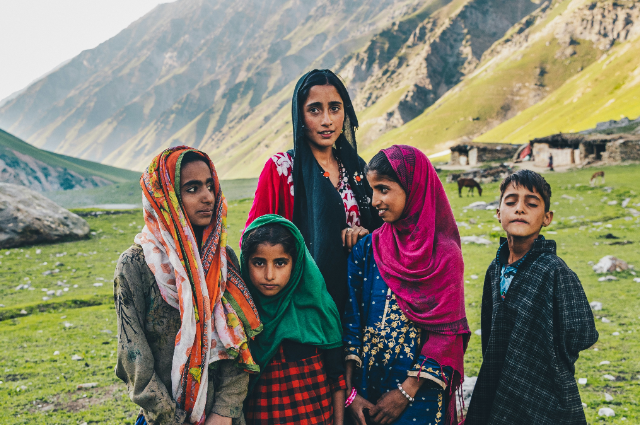
1. Local Civilian Response: A Deep Sense of Loss and Alienation
For many residents, especially those in the Kashmir Valley, the ruling is seen as a direct assault on the region’s autonomy and its cultural identity. The scrapping of Article 370 has been met with a pervasive sense of loss, particularly as it is viewed as the last vestige of Kashmir's distinct status within India. Locals, especially the older generation who lived through the conflict and the changes that have occurred over the decades, express a profound sense of alienation.
- Cultural and Political Identity: Kashmiris have long prided themselves on their unique cultural and political identity, which they believe was safeguarded by Article 370. With its abrogation, many feel their identity is being systematically eroded. The region’s political voice, historically marginalized, is seen as even more diminished after the decision.
- Economic and Social Concerns: While some in Jammu celebrate the changes as an opportunity for economic growth, in the Valley, there are fears that these alterations could lead to an influx of outsiders, which may alter the region’s demographic makeup. This has exacerbated the anxiety around cultural and social marginalization.
2. Kashmiri Youth: Concerns for Security and Future Prospects
The youth of Kashmir, particularly students and young professionals, are grappling with a complex mix of confusion and concern. While some feel the decision might offer economic opportunities, the pervasive sense of uncertainty and the harsh security measures that followed the abrogation have led to skepticism.
- Security and Personal Freedoms: Since the revocation of Article 370, security measures have been extremely stringent, including communication blackouts, curfews, and a heavy military presence. Many young Kashmiris feel their personal freedoms are curtailed, which only amplifies their mistrust in the Indian state. The loss of Article 370, to them, symbolizes a future where their rights might be further restricted.
- Political Disillusionment: For a younger generation already disillusioned with political leadership, especially with the frequent disruptions in education and employment, the court ruling has added to their sense of powerlessness. The absence of political space and representation for Kashmiris is seen as an ongoing issue that deepens the disconnect between them and the national government.
3. Regional Leaders: Political Fallout and Calls for Reconciliation
For Kashmir’s political leadership, particularly regional leaders such as former Chief Ministers of Jammu and Kashmir, the Supreme Court’s verdict is seen as both a legal and political blow. These leaders have been at the forefront of demanding autonomy and special status for Kashmir.
- Opposition to the Verdict: Political leaders like Mehbooba Mufti, Omar Abdullah, and Farooq Abdullah, who have traditionally advocated for Kashmir’s special status, have been vocal in their opposition to the court’s decision. They argue that the abrogation of Article 370 not only violates Kashmiris’ political and cultural rights but also compromises the region's special relationship with India.
- The Call for Dialogue: Leaders across party lines have called for a political dialogue to address the concerns of the people of Jammu and Kashmir. They emphasize that the decision has deepened distrust and calls for greater transparency and accountability in the government’s approach toward Kashmir.
4. Social Media and Public Outcry: A Digital Divide
The debate around the Article 370 abrogation has also found its place in the virtual world. Social media platforms have been a battleground where Kashmiris, both in the region and in exile, have voiced their dissent. For many, the decision represents a violation of Kashmir's rights, and they have taken to digital spaces to express their discontent.
Kashmiris living outside the state have used platforms like Twitter and Facebook to condemn the revocation and demand the restoration of their rights. The digital divide between those within the region, who often face restrictions on communication, and those outside, has added complexity to the discourse.
5. Reconciliation vs. Resistance: Diverging Paths
While many Kashmiris remain hopeful that political negotiations with India will lead to a better future, others, particularly separatist groups, view the ruling as a catalyst for continued resistance. The long-standing issue of Kashmir’s autonomy remains unresolved, with calls for greater self-determination growing louder in some quarters. Meanwhile, in Jammu, the mood is largely celebratory, as the region hopes that the changes will bring economic development and greater integration with the rest of India.
POLITICAL DIALOGUE WITH PAKISTAN
The Kashmir issue remains one of the most contentious and sensitive topics in South Asian geopolitics, having been a flashpoint for conflict between India and Pakistan since the partition in 1947. The recent Supreme Court ruling in India, which upheld the abrogation of Article 370 and revoked Jammu and Kashmir's special status, has only intensified discussions on the region’s political future.
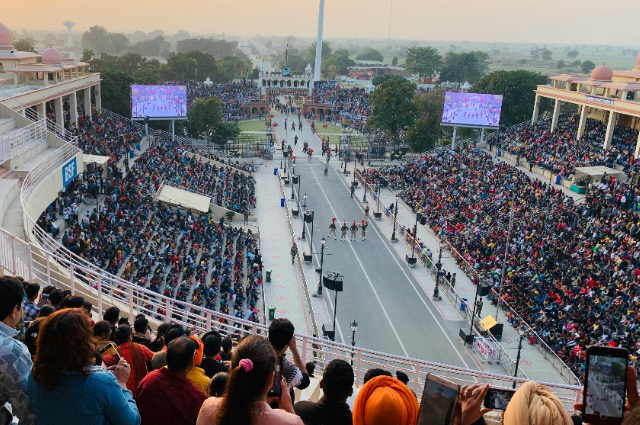
1. The Need for a Renewed Dialogue
- Legacy of Past Dialogues: Over the years, numerous attempts at dialogue between India and Pakistan have been made, ranging from the Shimla Agreement (1972) to more recent talks under the leadership of Atal Bihari Vajpayee in the early 2000s. However, these dialogues have often been derailed by mutual distrust, military skirmishes, and political tensions.
- Changing Geopolitical Landscape: The abrogation of Article 370 has further complicated the issue. For Pakistan, this move represents a violation of Kashmiris' rights, intensifying its demands for international intervention. In this context, Pakistan has emphasized the importance of renewing the dialogue to resolve the Kashmir dispute. Pakistan’s call is centered around securing Kashmir’s autonomy and advocating for a plebiscite, which has been a longstanding demand in the region.
2. The Geopolitical Significance of Kashmir
- Strategic Location: Kashmir holds immense geopolitical significance for both India and Pakistan. Nestled between two nuclear-armed neighbors, the region's control is vital for national security, especially considering the strategic corridors that pass through it. The Line of Control (LoC) dividing the region remains a source of military standoffs.
- Impact on India-Pakistan Relations: The status of Kashmir affects not just bilateral relations between India and Pakistan but also their influence in international diplomacy. The Kashmir issue has led to multiple wars and continues to define the narrative between the two countries. Both nations have used Kashmir to bolster their national identity, and any shift in its status directly impacts this.
- International Involvement: The Kashmir issue also draws global attention, with countries like the United States, China, and others periodically calling for peace talks. However, international support is often skewed, and the region's geopolitical dynamics are further complicated by India’s strong stance against third-party mediation.
3. Pakistan's Demand for Dialogue
- Internationalization of the Issue: Pakistan, after the abrogation of Article 370, has called for internationalizing the Kashmir issue. Islamabad argues that Kashmir is a bilateral issue that has transformed into an international one due to the violation of international norms. For Pakistan, a renewed dialogue is not just about bilateral talks but about bringing global attention to Kashmir's future and securing its rights through a multilateral framework.
- Role of UN Resolutions: Pakistan continues to push for the implementation of United Nations Security Council (UNSC) resolutions, particularly the one calling for a plebiscite in Kashmir. This demand has been a consistent theme in Pakistan's diplomatic efforts, which it views as the most viable path toward resolving the issue.
4. India's Stance on Dialogue
- Bilateral Negotiations: India, however, maintains that Kashmir is an integral part of its sovereign territory and that any talks should focus on terrorism and cross-border security issues rather than on Kashmir’s autonomy. India's position is rooted in its constitutional change to integrate Jammu and Kashmir more deeply into the Indian Union.
- Absence of Trust: The repeated breakdown of dialogue, especially after events like the 2016 Uri attack and the 2019 Pulwama bombing, has deepened the trust deficit. India views Pakistan's consistent support for insurgents in Kashmir as a stumbling block to meaningful dialogue. Additionally, India's opposition to internationalizing the issue stems from its belief that Kashmir is a domestic issue, and any external involvement undermines national sovereignty.
5. Challenges to Renewed Dialogue
- Escalating Tensions and Military Engagement: The military standoff along the LoC, including ceasefire violations and cross-border firing, poses a significant challenge to peace talks. For Pakistan, any meaningful dialogue must address the military occupation in Kashmir and ensure the region’s autonomy or its eventual self-determination. However, India's concerns over cross-border terrorism complicate the possibility of such discussions.
- Internal Political Pressures: Both countries face domestic political pressures that further hinder dialogue. For Pakistan, its government must contend with domestic factions that seek more assertive policies on Kashmir. In India, the ruling government’s nationalistic approach, which emphasizes the integration of Jammu and Kashmir, leaves little room for compromise on the region’s status.
6. The Role of the Global Community
- International Mediation: While India has consistently opposed international mediation, the international community’s role in facilitating dialogue cannot be ignored. Global powers such as the United States and China, along with international organizations like the United Nations, could potentially act as neutral facilitators to bring India and Pakistan back to the negotiation table.
- Diplomatic Engagement: As a part of the global community, the engagement of global powers in creating an environment conducive to dialogue would play a significant role. However, any such intervention must respect the sovereignty and territorial integrity of both India and Pakistan.
INDIA-PAKISTAN RELATIONS AND INTERNATIONAL REACTION
The ruling not only reshapes the political and constitutional landscape of Jammu and Kashmir but also casts a long shadow on India-Pakistan relations and the broader geopolitical dynamics.
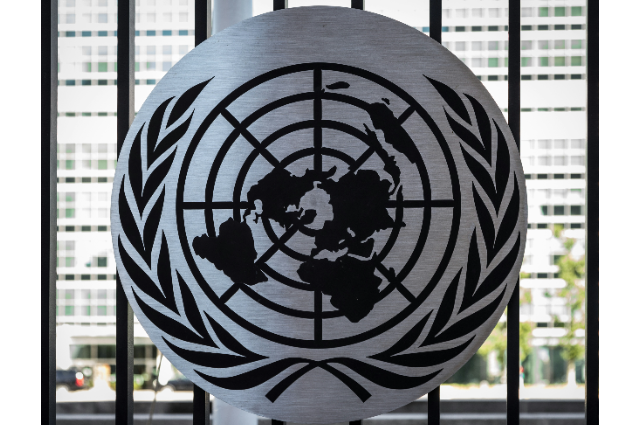
Impact on India-Pakistan Relations:
1. Escalation of Diplomatic Tensions:
The abrogation of Article 370 was perceived by Pakistan as a unilateral move by India to alter the status of Kashmir, which Pakistan claims as part of its territory. This decision has significantly strained bilateral relations, with Pakistan's government and military publicly condemning India's actions. In turn, Pakistan has sought to raise the issue in international forums, claiming that India’s actions violate UN resolutions and international law.
2. Breakdown in Dialogue:
Historically, India and Pakistan have engaged in several rounds of diplomatic dialogues aimed at resolving the Kashmir dispute. However, the recent events have practically frozen any possibility of meaningful talks. Pakistan has consistently called for a return to a bilateral dialogue to address Kashmir, but India has rejected such offers, stating that Kashmir is an internal matter.
3. Military Posturing and Cross-Border Tensions:
The abrogation has also heightened the security situation along the Line of Control (LoC), where military skirmishes and ceasefire violations have become more frequent. Both sides have bolstered their military presence in Kashmir, leading to concerns over an escalation into full-scale conflict. While both nations have nuclear capabilities, the region remains on a fragile peace-keeping edge, where any misstep could have severe consequences for regional and global stability.
4. Diplomatic Isolation for Pakistan:
Although Pakistan has vocally protested the revocation of Article 370, its attempts to internationalize the Kashmir issue have had limited success. While countries like China have backed Pakistan's stance, India has continued to present the decision as a sovereign issue, garnering support from key global powers, particularly the United States and some European countries, who view the region's political status as an internal matter for India to address. Pakistan's international efforts to push for UN intervention have largely failed to gain traction.
International Reactions:
1. United States and Western Powers:
The U.S. and European nations, while calling for restraint and emphasizing the need for dialogue, have generally supported India’s position on Kashmir. The U.S. has underscored that Kashmir is an internal matter for India and has urged both nations to maintain peace and avoid military escalation. Similarly, key European nations, including the UK and France, have refrained from directly criticizing India's actions, instead focusing on the importance of upholding human rights and restoring normalcy in the region.
2. China’s Role and Support for Pakistan:
China, a close ally of Pakistan, has been one of the strongest critics of India's actions in Kashmir. It has expressed concerns over the region’s future, particularly with regard to the strategic area of Gilgit-Baltistan, which India claims as part of its territory. In the wake of India’s moves, China has bolstered its support for Pakistan in multilateral forums like the Shanghai Cooperation Organization (SCO). The two countries have also been working on strengthening their economic and military ties, especially in the context of their shared concerns over India’s growing influence in the region.
3. Middle East and Muslim World’s Stance:
While many Muslim-majority countries, including Turkey and Malaysia, have voiced their concerns over the situation in Kashmir, calling it an issue of human rights, their actions have remained largely symbolic. However, some Gulf nations, including Saudi Arabia and the UAE, have adopted a more neutral stance, balancing their economic and strategic ties with both India and Pakistan.
4. Role of the United Nations:
The United Nations has largely stayed out of the direct political debate following the abrogation, with the Security Council failing to adopt any formal position on the matter. Although Pakistan has sought international mediation, the UN's response has largely been limited to calls for peaceful dialogue and an end to violence. The Kashmir issue has not been raised to the extent seen in previous decades, mainly because of India's growing international standing and influence.
5. Global Public Opinion and Activism:
The global civil society, including various human rights organizations, has raised alarms about the human rights situation in Kashmir. Reports of internet shutdowns, curfews, and increased military presence have sparked protests, especially among the diaspora communities in the West. International pressure on India to ensure the protection of civilian rights in Kashmir has been mounting, but it remains to be seen how this will influence India’s policies.
SECURITY AND MILITARY CONCERNS
Since the abrogation of Article 370 in August 2019, the region has witnessed heightened military presence, an increase in militant activities, and ongoing challenges in managing both internal stability and cross-border tensions.
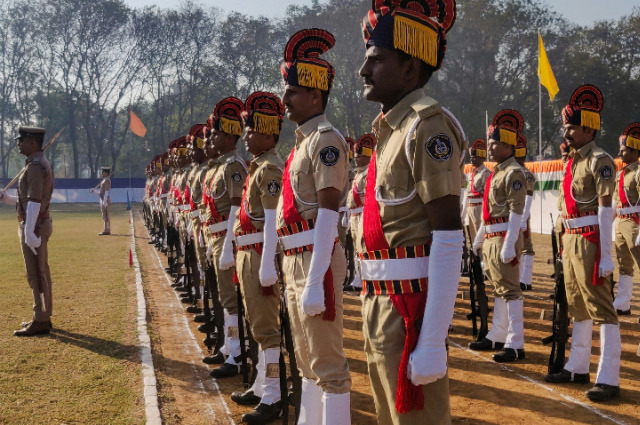
1. Increased Military Presence
- Scaling Up of Forces: Jammu and Kashmir is one of the most militarized regions in the world, with over half a million soldiers deployed to maintain peace and security. The region continues to face a heavy security footprint, especially following the abrogation of Article 370, which altered the region's special status.
- Role of Paramilitary Forces: In addition to the Indian Army, paramilitary forces like the CRPF (Central Reserve Police Force) and BSF (Border Security Force) are regularly stationed to deal with internal security threats, such as insurgencies, protests, and cross-border infiltrations.
2. Incidents of Militancy and Armed Conflict
- Resurgence of Militancy: Despite attempts at peace, Kashmir remains a hotbed of militancy. Groups like Jaish-e-Mohammed and Lashkar-e-Taiba continue to target security forces and civilians, especially along the LoC (Line of Control) and within urban centers.
- Terror Attacks and Ambushes: 2024 has already seen a resurgence in militant activity, including grenade attacks, ambushes, and targeted killings of security personnel, with the violence often attributed to Pakistan-backed groups operating from across the border.
- Local Recruitment and Radicalization: There is growing concern about the local population's increasing involvement in militancy. The disillusionment stemming from years of political instability and security clampdowns fuels the appeal of armed groups, making counter-insurgency operations more complex.
3. Internal Stability vs. Military Overreach
- Civilian Impact: The security presence, while necessary for curbing militancy, often leads to collateral damage. Civilians frequently face curfews, restrictions on movement, and even detentions, all of which contribute to resentment and unrest.
- Balancing Law and Order: The security forces are tasked with not only combating militants but also maintaining law and order during periods of civil unrest. However, the constant military surveillance and frequent lockdowns have alienated sections of the population, especially the youth, leading to a cycle of anger and resistance.
4. Cross-Border Tensions with Pakistan
- Continued Border Skirmishes: The conflict between India and Pakistan over Kashmir remains unresolved, with frequent skirmishes and ceasefire violations along the 740-kilometer Line of Control (LoC). Cross-border infiltration attempts by militants from Pakistan often lead to encounters with Indian forces.
- Diplomatic Stalemate: Despite multiple peace initiatives over the years, relations between India and Pakistan remain strained. The military situation in Kashmir plays a pivotal role in shaping the broader geopolitical relationship, complicating diplomatic dialogue on both sides.
- The Role of China: China's increasing influence in Pakistan and its growing involvement in the region, particularly in infrastructure projects under the China-Pakistan Economic Corridor (CPEC), has added a new layer to the security dynamics in Kashmir, further exacerbating regional tensions.
5. Counter-Terrorism Strategies
- Technological Integration: The Indian government has increasingly turned to advanced surveillance technology, including drones, facial recognition software, and artificial intelligence, to monitor militant movements and prevent attacks. These technologies are part of a broader effort to boost the efficiency of security operations.
- Community Engagement: The military's role extends beyond combat into community engagement. Programs aimed at deradicalization, youth employment, and civic integration are vital in mitigating the appeal of militancy. However, these initiatives are often met with skepticism and mistrust from the local population due to the history of military repression.
6. International Impact and Human Rights Concerns
- Global Scrutiny: The region's security situation has drawn international attention, with human rights organizations consistently reporting alleged abuses by security forces. These include allegations of excessive force, arbitrary detentions, and curtailment of free speech. International calls for India to allow greater monitoring by global bodies often clash with India's stance on sovereignty and national security.
- Role of International Organizations: The United Nations and other international organizations periodically intervene, calling for peace talks, human rights investigations, and a diplomatic solution. However, these calls are often dismissed by India, which insists that Kashmir is an internal matter.
7. The Future of Security in Kashmir
- De-escalation or Escalation?: The path forward remains uncertain. While some argue that reducing the military presence and focusing on political dialogue could help ease tensions, others warn that such moves might embolden militants and create a vacuum of security.
- Long-Term Peace Strategy: Moving beyond military solutions, a sustainable peace strategy must incorporate political reconciliation, economic development, and genuine autonomy for Kashmir's people. However, the ongoing tensions with Pakistan and the entrenched security concerns make such a strategy difficult to implement.
ECONOMIC AND SOCIAL DEVELOPMENT
While there are ongoing debates about its long-term impact, it is essential to assess whether this major political change has helped or hindered the local economy and social development. Here’s a detailed breakdown of the situation:
1. Impact on Economic Development
- Infrastructure Investment: Following the abrogation of Article 370, the Indian government has increased its focus on infrastructural development in Jammu and Kashmir. This includes investments in road networks, airports, and healthcare facilities aimed at fostering long-term economic growth. For example, the construction of the Zojila Tunnel, which will connect Srinagar to Leh, is expected to significantly boost regional connectivity and trade.
- Industrial Growth: The central government’s push to integrate Jammu and Kashmir into the broader Indian economy has sparked discussions on attracting new industries to the region. The introduction of new policies, such as the Jammu and Kashmir Industrial Policy 2021, aims to encourage business investment by offering tax benefits and subsidies to industries willing to set up in the region challenges remain, particularly in terms of the region's political stability and security concerns that may deter foreign investments ( Agriculture and Trade Jammu and Kashmir’s economy has traditionally been reliant on agriculture, horticulture, and handicrafts. While the revocation has led to improved access to markets and better infrastructure, the region's agricultural sector is still facing hurdles like water scarcity, market access, and labor shortages)
2. Tourism Industry: Boom or Bust?
- Initial Setbacks: The tourism industry, a key pillar of Kashmir’s economy, suffered immensely in the immediate aftermath of the abrogation. Travel advisories from foreign governments, coupled with restrictions on movement, led to a sharp decline in both domestic and international tourism.
- Gradual Recovery and Potential: In recent years, there has been a cautious resurgence in the tourism sector. The government has made significant efforts to revitalize tourism by showcasing Kashmir as a safe and beautiful travel destination once again. This includes initiatives like the 'Visit Kashmir' campaign and efforts to restore tourist infrastructure . However's image is still recovering, and many tourists remain hesitant due to ongoing security concerns and the volatile political environment.
- Connectivity: Improved transportation links, such as the expansion of Srinagar Airport and the introduction of high-speed trains, are expected to further boost tourism in the long run. Kashmir’s natural beauty, alongside government efforts to promote adventure and eco-tourism, provides significant potential for growth in this sector .
3. Social Livelihoods: The Hidden Costs
- Human Rights and Livelihood Challenges: The abrogation of Article 370 has led to significant social and political upheaval, with protests, curfews, and crackdowns. Many local residents, especially from the Valley, have voiced concerns about the erosion of their political rights and cultural identity. This sense of alienation has, at times, overshadowed the potential economic benefits brought about by infrastructural development.
- UnemplEconomic Disparity: Despite the promises of economic rejuvenation, unemployment rates in Jammu and Kashmir have remained high. While new policies might encourage industries, job creation remains a major challenge. The youth, especially those in the Valley, face a scarcity of employment opportunities, which exacerbates feelings of frustration and disenchantment.
- Shifts inric: The social landscape of Kashmir has been affected by the political changes. Some have expressed concerns that the move has caused deepening divisions along religious and cultural lines, impacting communal harmony. Meanwhile, the youth, particularly those with limited educational opportunities, find themselves grappling with a changing economic reality and uncertain prospects.
4. The Pa Opportunities and Challenges
- Sustainable Development: There is a pressing need to create sustainable development policies that not only promote economic growth but also preserve the region's unique cultural identity. Development projects must be mindful of the local population’s concerns about cultural erosion and social stability. Economic growth should go hand-in-hand with addressing the region's educational, healthcare, and housing needs to ensure a better quality of life for all .
- Inclusive Governancress the social unrest and economic disparities, it is crucial that Jammu and Kashmir’s governance structure becomes more inclusive. Empowering local leaders and allowing for greater political autonomy within the bounds of national integration could help ease tensions and promote regional development.
- Global Investment Encouraging global partnerships in trade and investment could help unlock the region’s economic potential. However, this requires a stable political environment and improvements in security that can foster confidence among international businesses and tourists
HUMAN RIGHTS AND CIVIL LIBERTIES

1. Freedom of Expression:
- Restrictions on Media: Following the revocation of Article 370, numerous media outlets in Jammu and Kashmir have faced censorship and restrictions. Journalists and news organizations reporting on sensitive issues related to the region have been subjected to threats, harassment, and, in some cases, detentions. A significant decline in the free flow of information has been noted, as certain topics deemed contentious by authorities have been silenced.
- Curbs on Public Discourse: The space for public debates, discussions, and protests has been severely restricted. People wishing to express dissent, particularly in relation to the abrogation or issues surrounding autonomy, have faced heightened scrutiny.
2. Detentions and Arrests:
- Political Leaders and Activists: A large number of political leaders, including former Chief Ministers, party members, and activists, were detained shortly after the abrogation of Article 370. Many of these detentions were preventive, with little to no clear charges brought against the individuals involved. While some were released later, many remain under house arrest or continue to face legal proceedings that critics say lack transparency.
- Unlawful Detentions: Human rights groups have expressed concerns over the use of preventive detention laws like the Public Safety Act (PSA), which allows authorities to detain individuals without trial for extended periods. The use of these laws has been widely criticized for curbing personal liberties and bypassing legal protections.
3. Internet Shutdowns and Communication Barriers:
- Prolonged Internet Blackouts: One of the most striking civil liberty concerns in the aftermath of the Article 370 abrogation has been the widespread internet shutdowns imposed by the government. For months, Jammu and Kashmir experienced a complete internet blackout, followed by partial internet restoration with severe restrictions on speeds. These restrictions hampered not only daily communication but also access to essential services, education, and business.
- Violation of Right to Information: Internet shutdowns and communication restrictions directly impacted citizens’ ability to access information, participate in economic activities, and communicate with the outside world. Human rights advocates argue that such measures violate the right to information and hinder the right to free expression guaranteed under Indian and international law.
4. Militarization and Security Concerns:
- Increased Military Presence: The region saw an increased military presence, which led to heightened scrutiny of civilian activities. Reports of human rights violations by security forces, including arbitrary searches and detentions, have surfaced, raising concerns about the treatment of Kashmiri civilians in these highly militarized zones.
- Impact on Daily Life: The omnipresent military forces have created an atmosphere of fear and uncertainty, further restricting the personal freedoms of local residents. Ordinary people report feeling intimidated, and access to basic services has sometimes been delayed or denied due to security checkposts and curfews.
5. International and National Human Rights Organizations' Response:
- Global Condemnation: Several human rights organizations, including Amnesty International and Human Rights Watch, have voiced strong criticism of the actions taken by the Indian government in Jammu and Kashmir. These organizations have highlighted the disproportionate use of force, violations of civil rights, and the curbing of freedoms of speech, assembly, and movement.
- National Activist Mobilization: Within India, numerous human rights activists, lawyers, and social organizations have raised concerns about the situation in Kashmir. Calls for a return to democratic processes, including the restoration of statehood and civil liberties, have grown louder. Some activists have also raised alarms about the long-term psychological and social impact on the population due to these persistent restrictions.
6. Economic and Social Impact:
- Disruption of Local Economy: The constant security lockdowns, internet restrictions, and the closure of businesses during periods of unrest have had a devastating impact on the local economy. Small businesses, tourism, and education were among the most affected sectors, with many facing financial ruin or an inability to operate normally.
- Impact on Education: Students in Jammu and Kashmir faced significant setbacks due to the ongoing curfews and the internet shutdowns, which made online learning, vital during the pandemic, impossible. Many children and young adults were left without access to the tools and resources necessary to continue their education.
7. Legal and Constitutional Concerns:
- Questionable Legal Framework: Critics argue that many of the post-abrogation policies adopted in Jammu and Kashmir may be unconstitutional. They contend that several laws, such as the restrictions on freedom of movement and the imposition of curfews, go against the principles of justice laid out in India's Constitution.
- Judicial Oversight: There are concerns regarding the ability of the judiciary to effectively protect the rights of individuals in Jammu and Kashmir given the increasing control exercised by the executive. The independent functioning of the judiciary is seen as crucial for ensuring the protection of human rights in the region.
FUTURE OF JAMMU AND KASHMIR’S POLITICAL LANDSCAPE
The region's political evolution depends on a combination of factors, including the prospects for regional elections, the potential for reconciliation among various stakeholders, and the broader implications of continued unrest or peace in the region. Below is a detailed analysis of these factors:
1. The Path to Regional Elections
- Delayed Elections: Following the abrogation of Article 370 in 2019, the region has seen a political vacuum with many regional parties like the Jammu and Kashmir National Conference (NC) and People’s Democratic Party (PDP) being marginalized. While the central government has promised to hold elections, the lack of a clear timeline has raised concerns about the legitimacy of governance in the region.
- Key Challenges: Security concerns, administrative readiness, and the reorganization of Jammu and Kashmir into a Union Territory have complicated the electoral process. The reluctance of major political parties to participate in the electoral process has also added to the complexity of the situation.
- Possibility of Local Participation: In the future, regional elections may be influenced by the extent to which the local political parties can regain trust and the level of participation from the people. The elections will also be a critical test for the Bharatiya Janata Party (BJP) and its support base in the region.
2. Prospects for Reconciliation
- Engagement with Local Stakeholders: The demand for a political dialogue with Pakistan and Kashmiri separatist groups has remained a key issue since the abrogation of Article 370. While the government has expressed its commitment to reintegrating Jammu and Kashmir into the Indian political fold, a lasting reconciliation will require dialogue between the central government, regional parties, and local populations.
- Engagement with Pakistan: Tensions between India and Pakistan have historically been centered on the Kashmir issue, and any prospect for lasting peace in Jammu and Kashmir hinges on the stability of India-Pakistan relations. A resolution of the Kashmir issue, however, seems unlikely in the immediate future given the hardline positions of both governments.
- Local Reconciliation: Domestically, for reconciliation to succeed, the central government will need to address the grievances of the Kashmiri people, particularly regarding civil rights, employment opportunities, and the restoration of autonomy. The engagement of Jammu and Kashmir’s political parties, particularly those that advocate for autonomy within India, will be key.
3. Possibility of Continued Unrest
- Security Situation: The region continues to witness sporadic violence and militant activity, despite the central government’s claims of improved security. The rise of local militancy, particularly among youth, remains a significant threat to peace in the region. International and domestic human rights organizations continue to voice concerns over the militarization of the region, curbs on freedom of expression, and ongoing detentions.
- Public Sentiment: There is a palpable sense of alienation among the people of Jammu and Kashmir, especially after the revocation of special status. While some segments of the population support the changes, a large section of the youth remains dissatisfied, and continued unrest cannot be ruled out if their voices are not heard.
4. Economic Development and Peace Building
- Economic Revival: Economic development is crucial to the peace process. Infrastructure projects, investments in tourism, and job creation will play a central role in stabilizing the region. The government’s efforts to attract investments in Jammu and Kashmir’s industrial sectors could bring long-term benefits, but only if there is a corresponding improvement in security and political stability.
- Education and Employment: The younger generation's access to education, healthcare, and employment opportunities will be pivotal in shaping the region’s future. If these basic needs are not met, the region will continue to face social unrest, which could further destabilize the political environment.
5. Long-Term Vision for Peace and Stability
- Integration or Autonomy: The ongoing debate about the future status of Jammu and Kashmir will likely continue for the foreseeable future. While the central government is focused on fully integrating the region into India, voices for greater autonomy or special status will persist, especially within the local political and public spheres.
- Global Perspective: The international community, including the United Nations, has continued to express concern over the situation in Jammu and Kashmir. As global attention intensifies, India may have to navigate increased diplomatic pressures while balancing national sovereignty and regional peace.
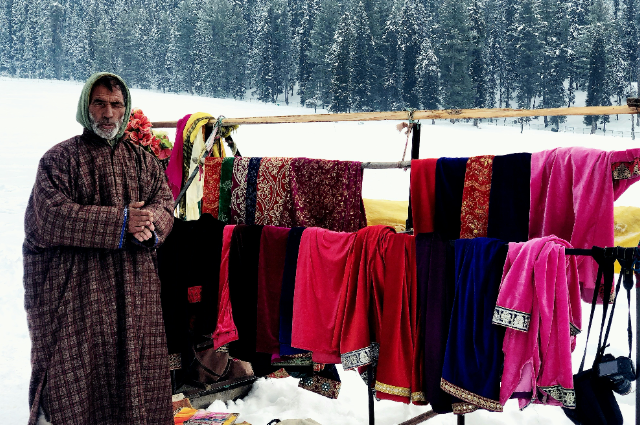
The future of Jammu and Kashmir’s political landscape is likely to be a delicate balancing act between addressing local grievances, managing security concerns, and navigating regional and international diplomacy. While the potential for reconciliation remains, it hinges on the ability of the central government to engage meaningfully with local political figures, address the issues of autonomy, and create an inclusive, peaceful environment. However, the political landscape may also continue to witness unrest if the aspirations of the people are not addressed, and if the security situation remains fragile.
In the end, Jammu and Kashmir’s future may lie in its ability to adapt to the evolving political realities, balancing national interests with the aspirations of its diverse population. Whether the region finds a path toward peace or continues to struggle with instability depends on the collective will of all stakeholders involved.
